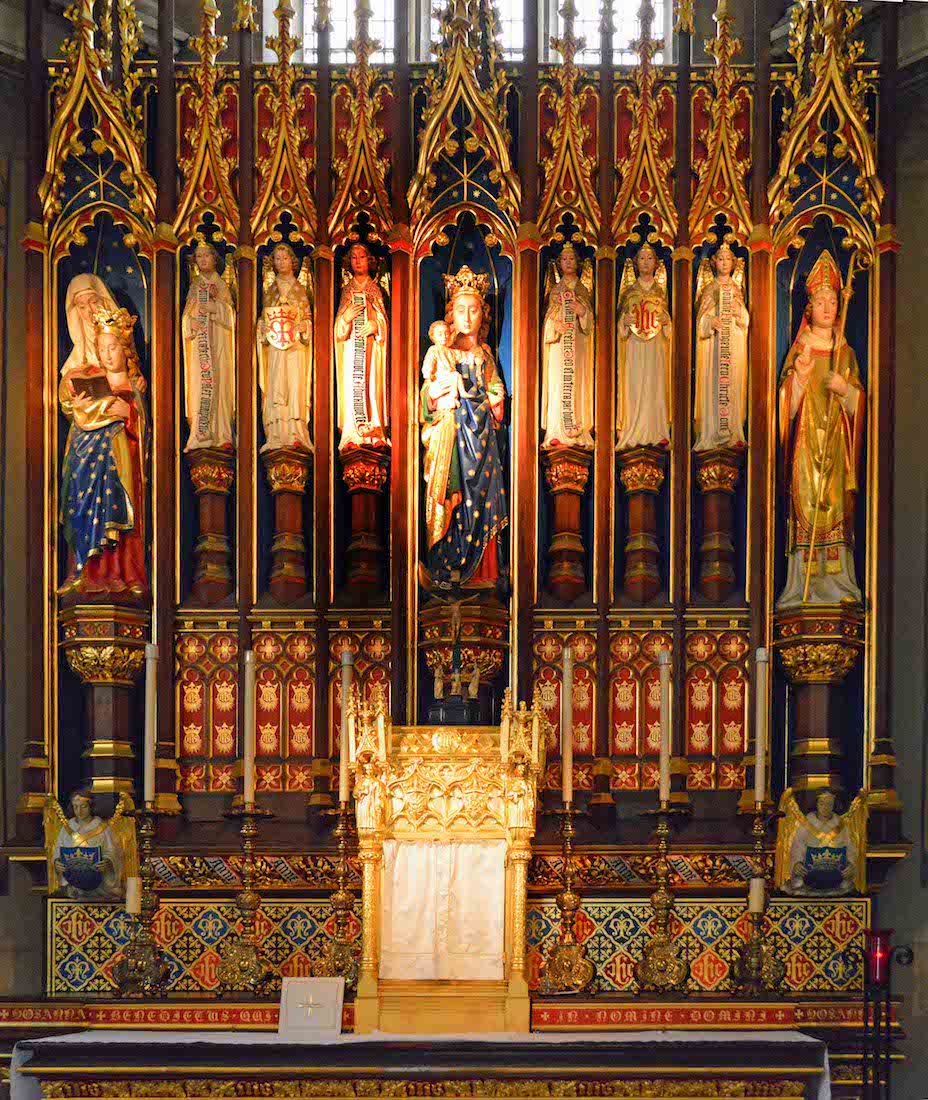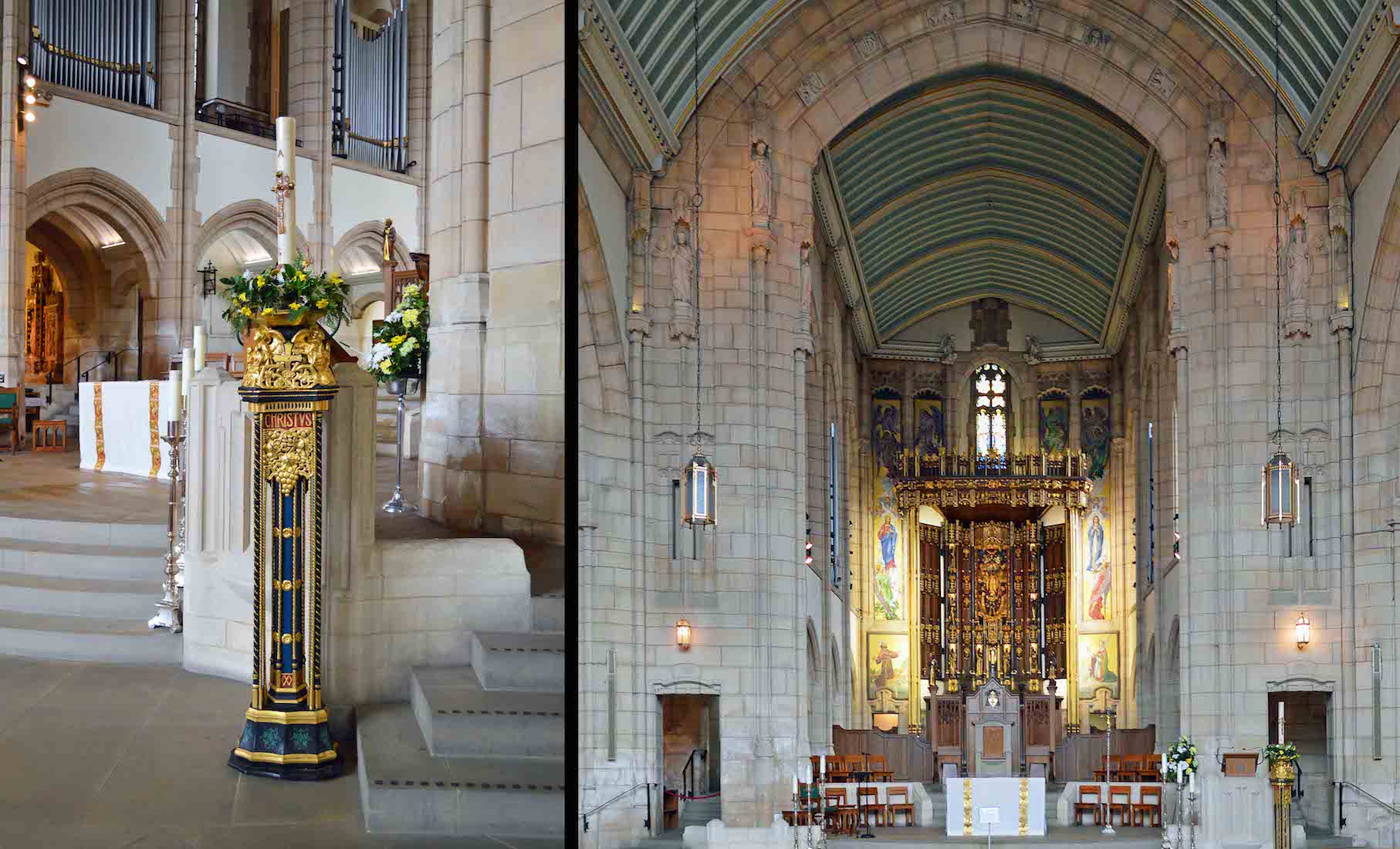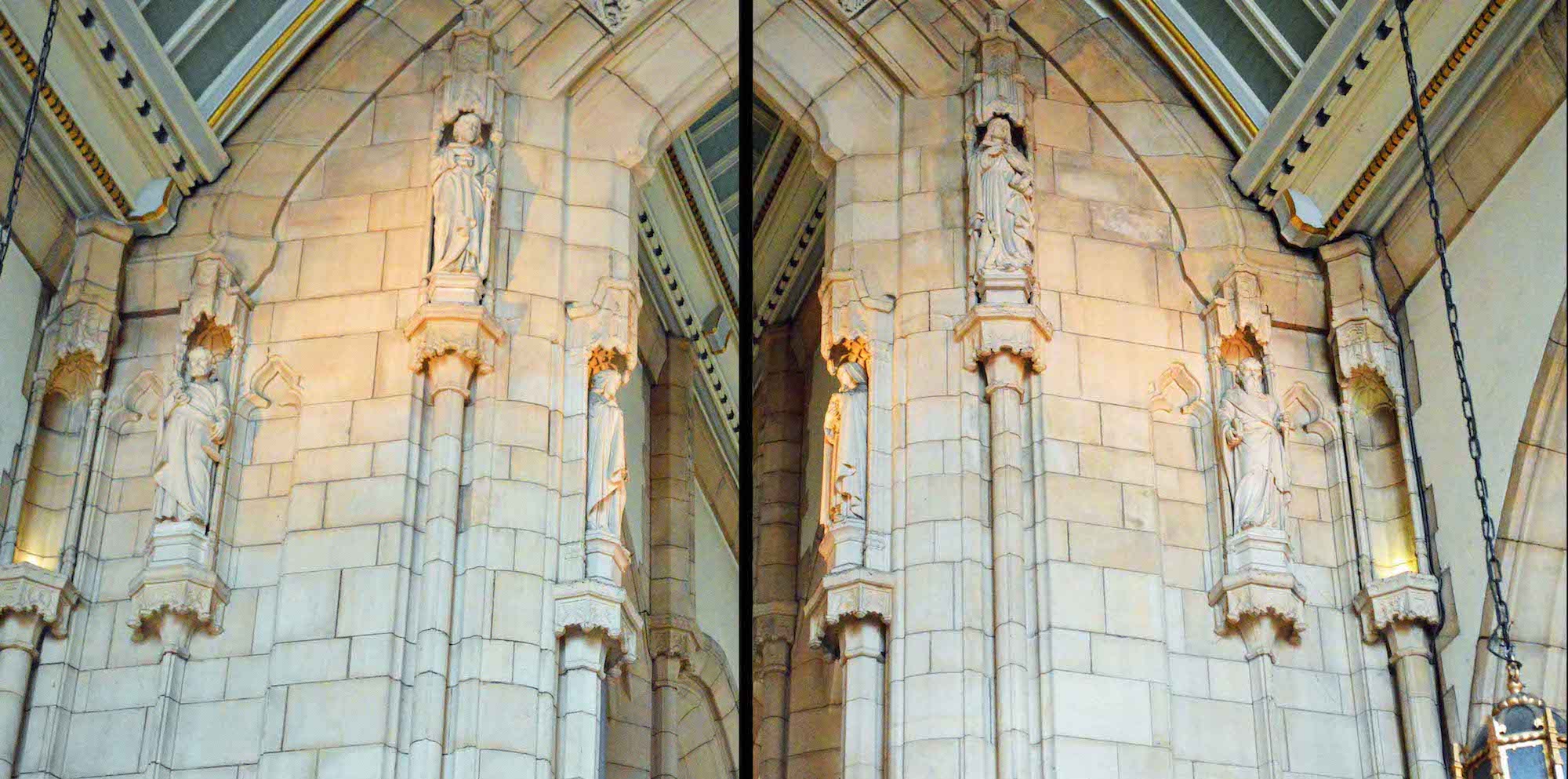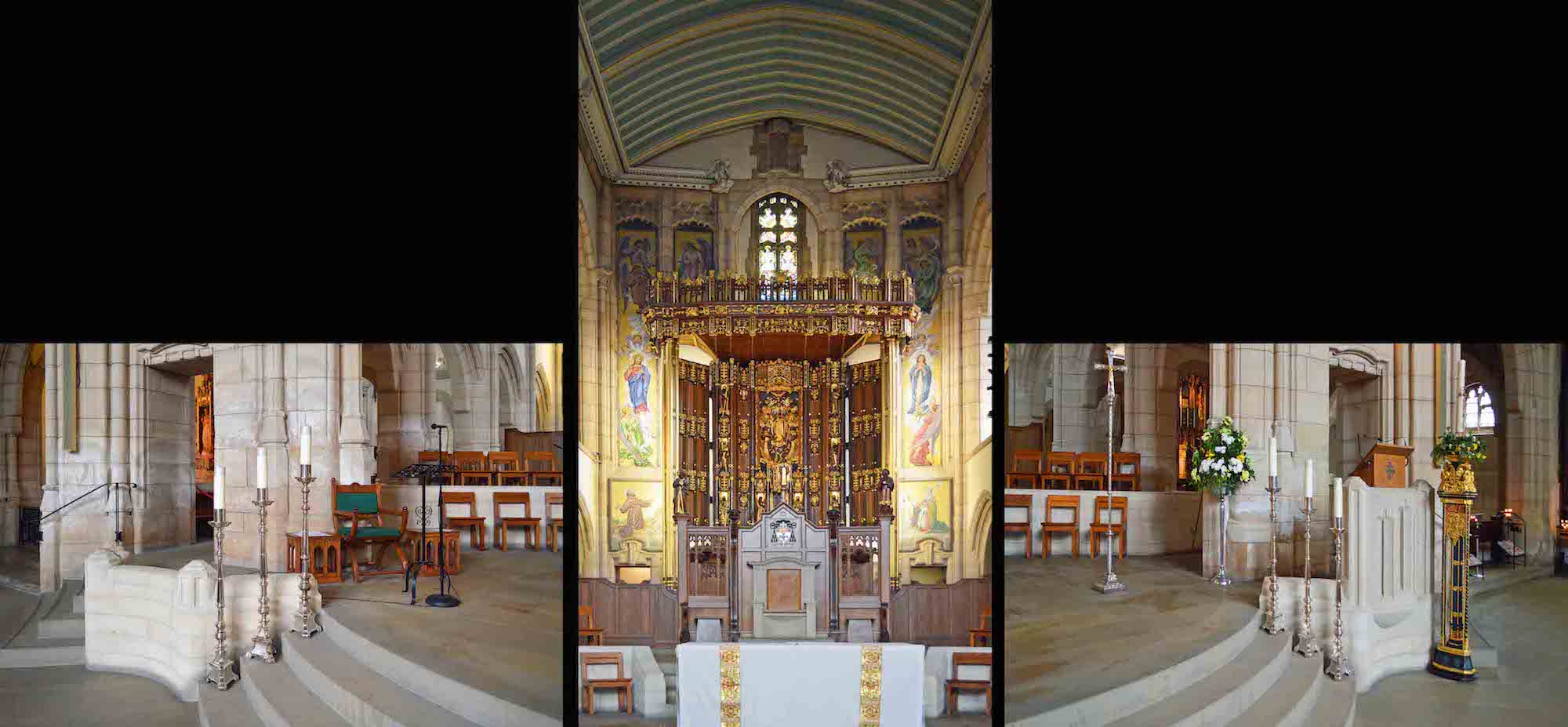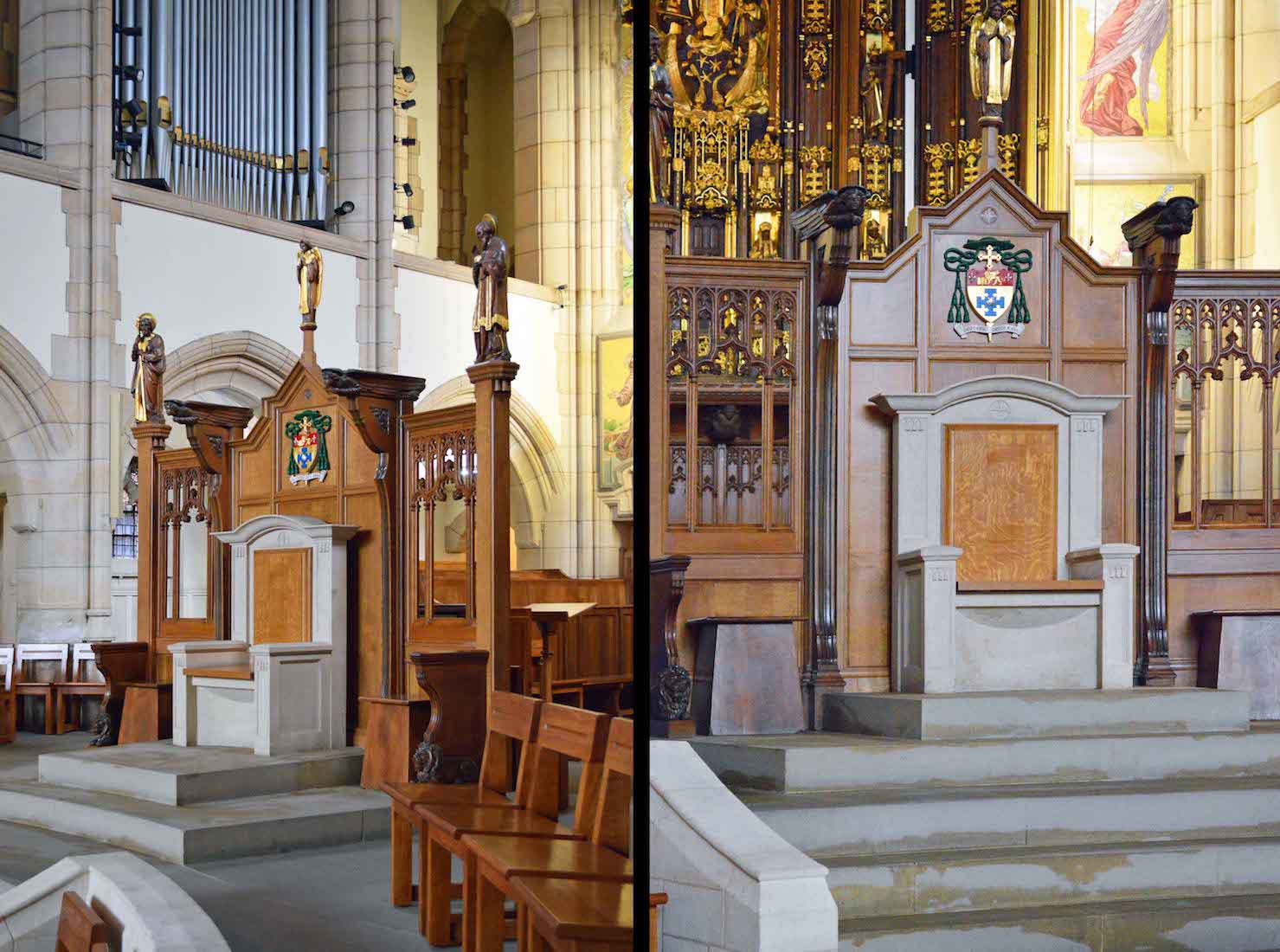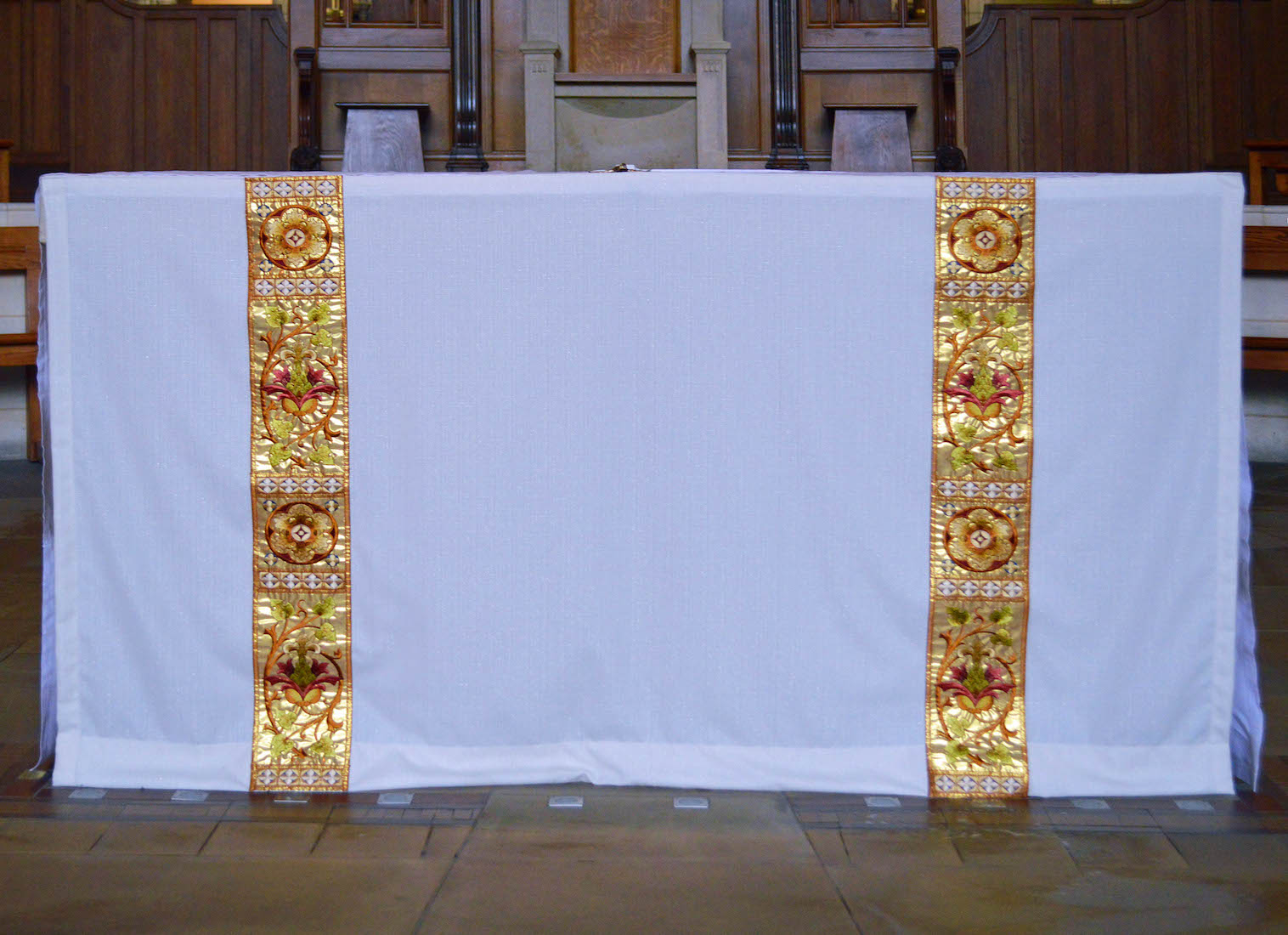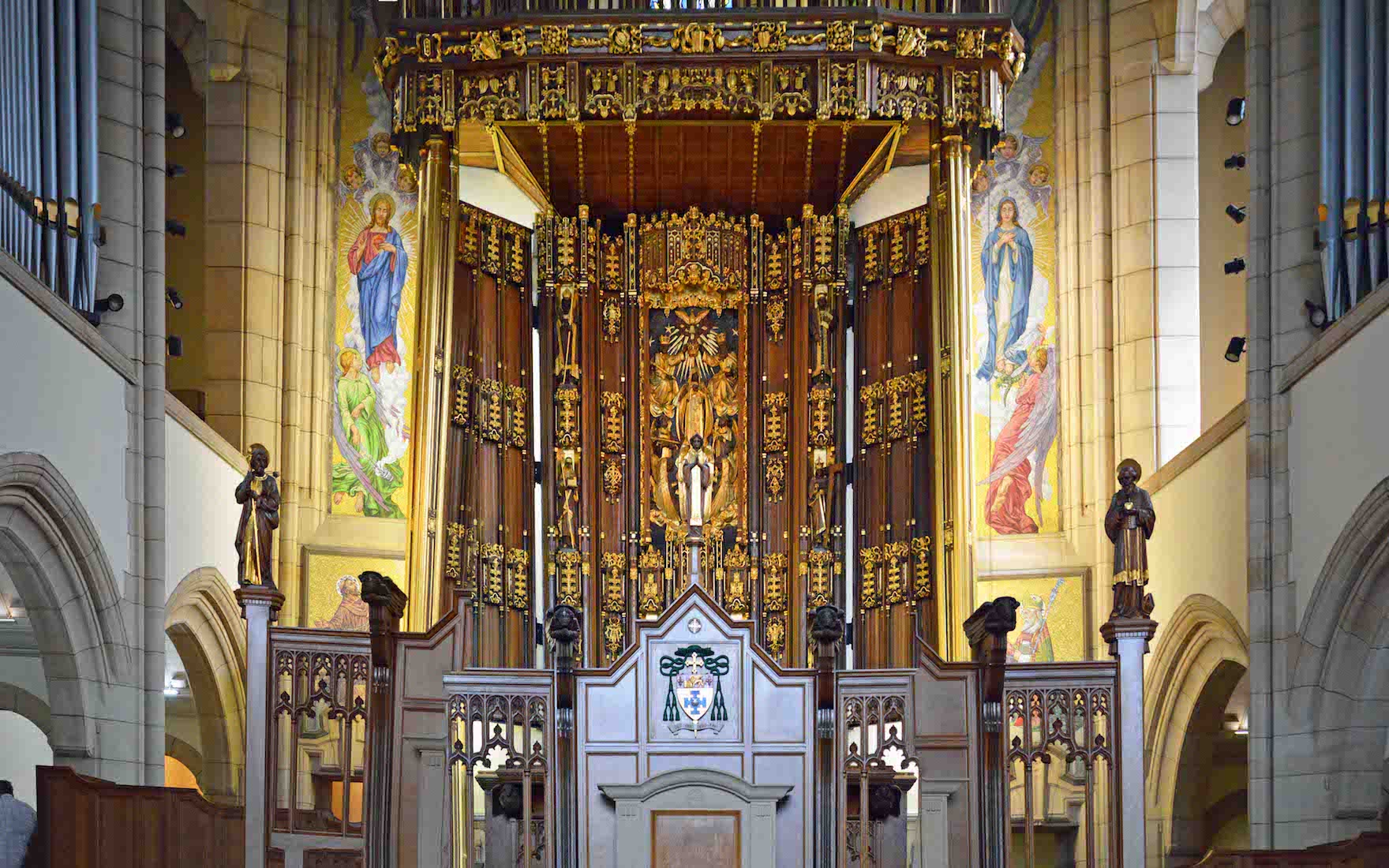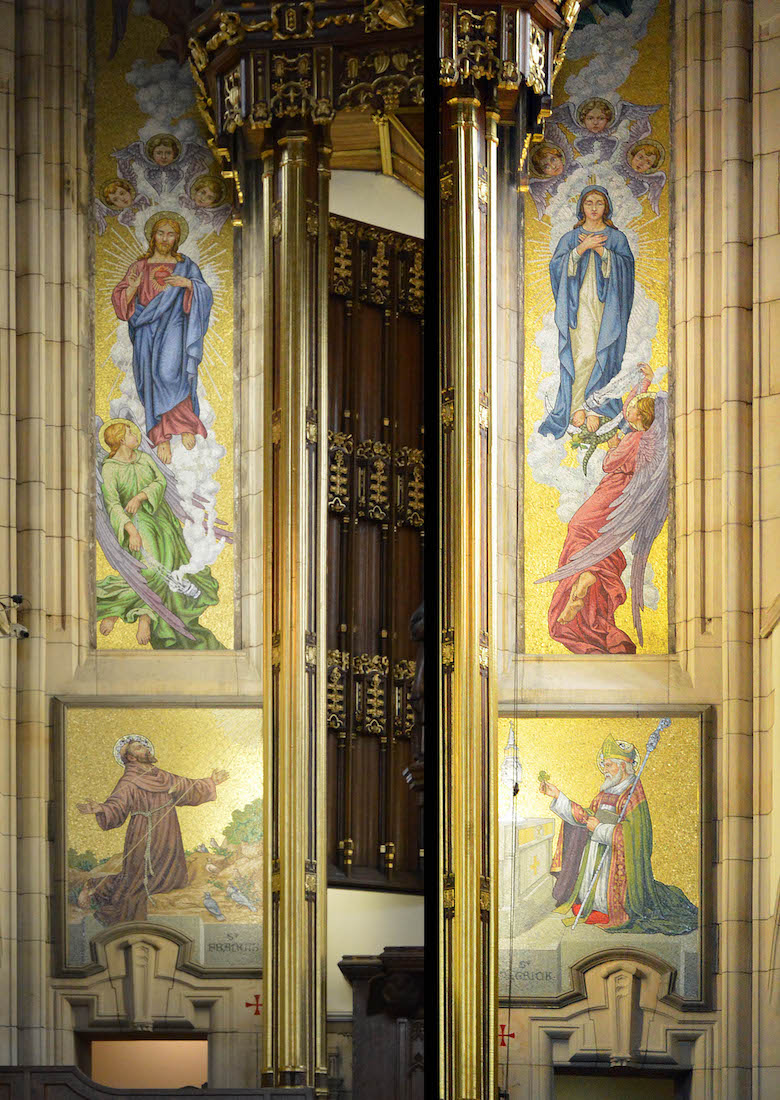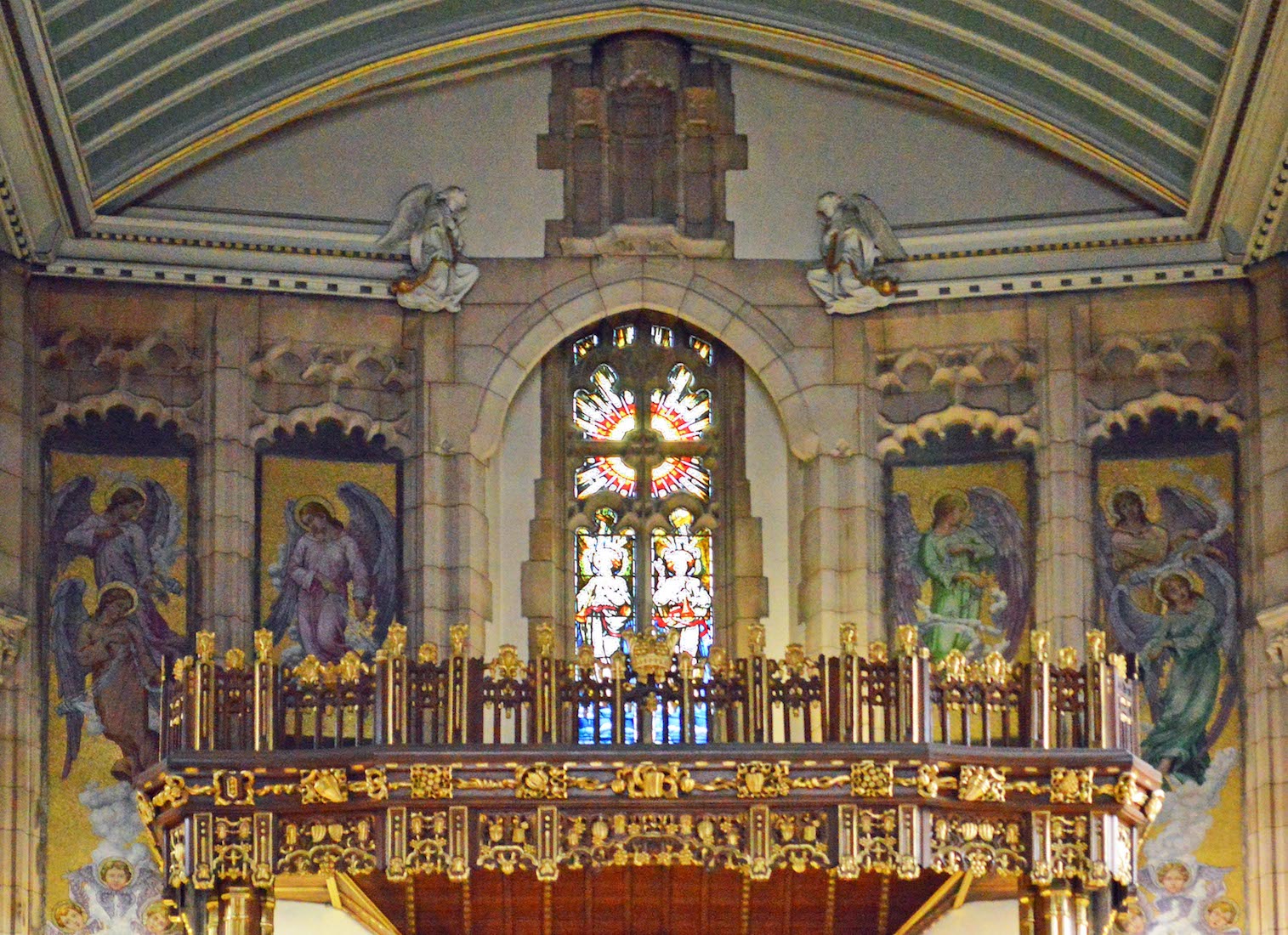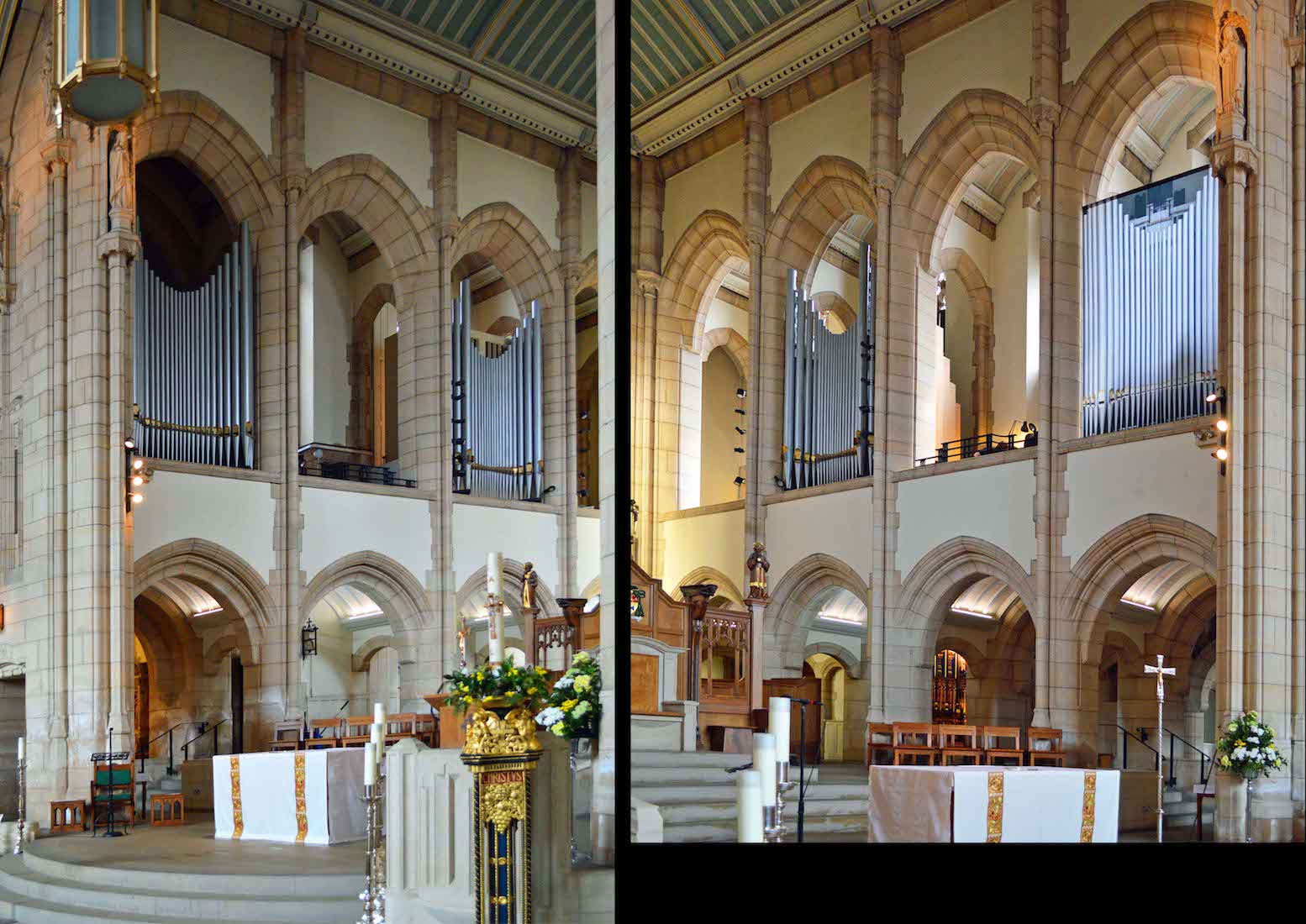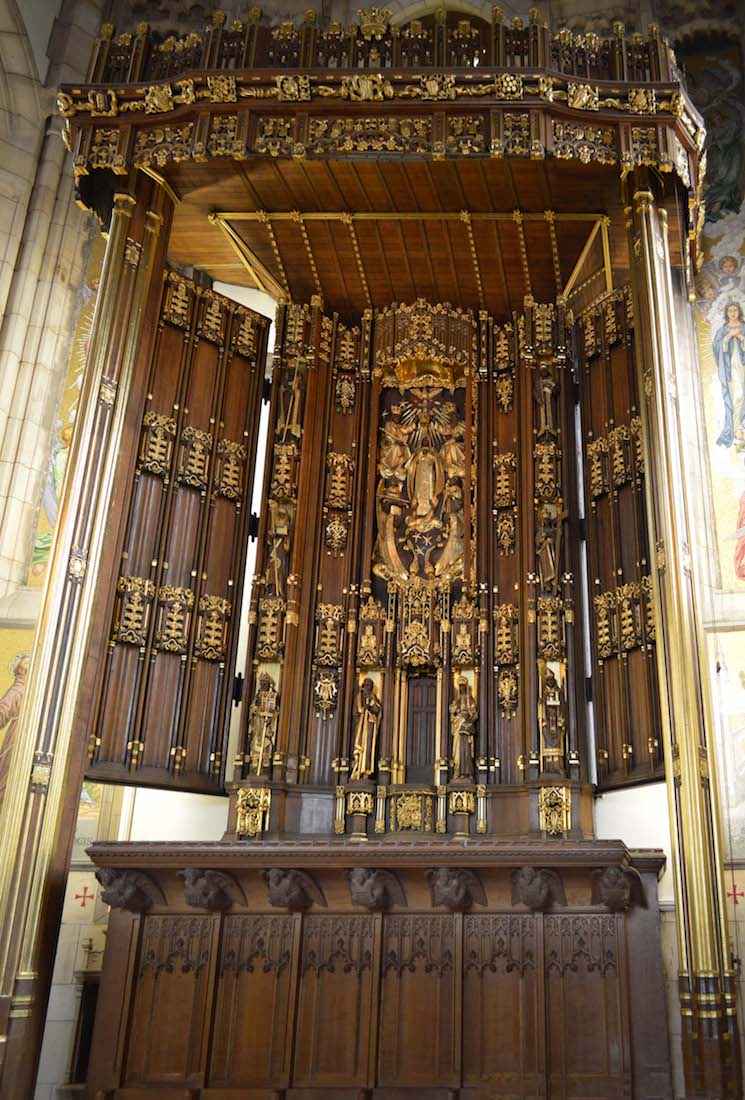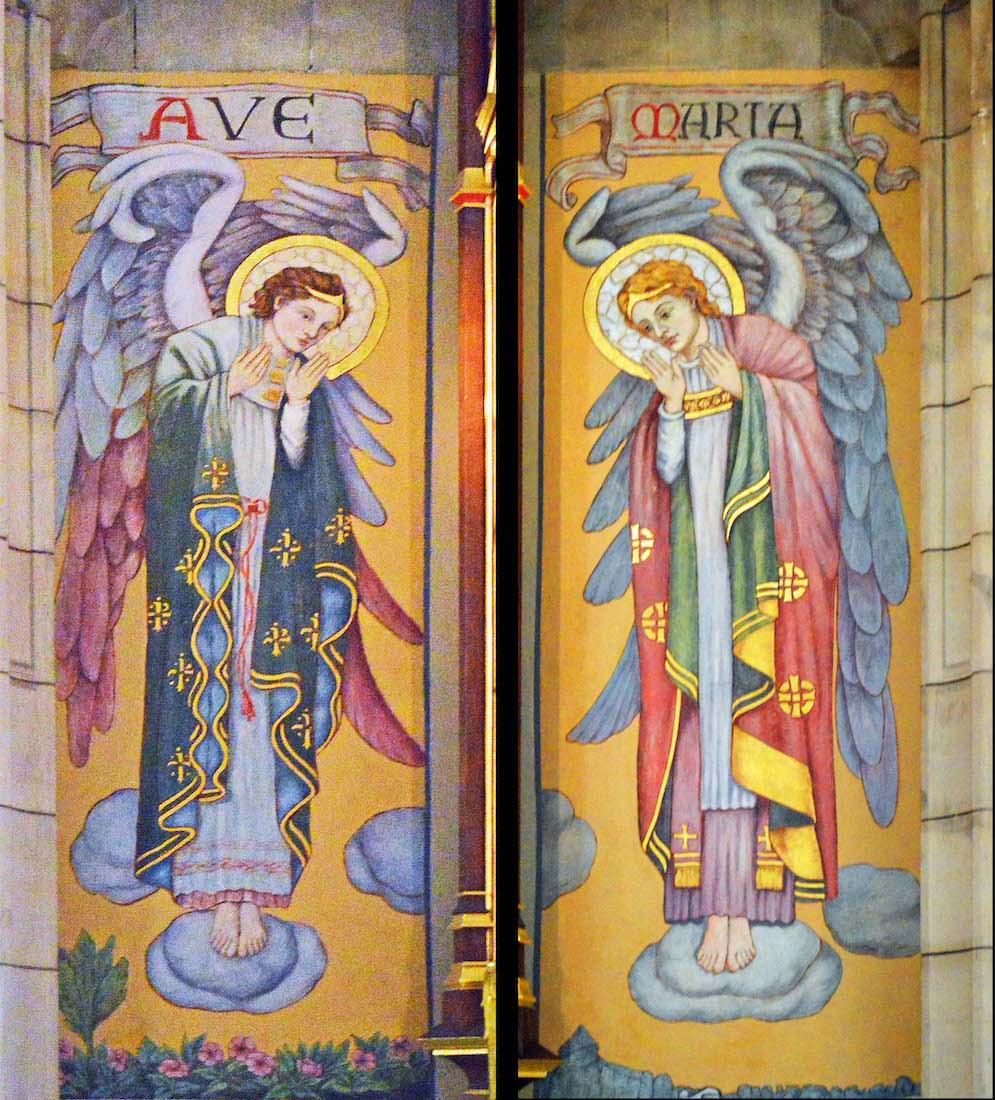
In the Lady Chapel a large angel stands on either side of the reredos. These painted figures stand in awe as they look down. One might suppose that their gaze is fixed on the central figure of Mary holding the infant Jesus. PLAN
42. LADY CHAPEL FRESCOES

Above the entry arch is written ‘Assumpta est Maria in coelum’ (God has taken Mary to Heaven). Then all around the Chapel above the arches are wall frescoes with text: ‘Regina Confessorum’, ‘Regina Prophetarum’, ‘Regina Angelorum’, ‘Regina Apostolorum’, ‘Regina Martyrum’, ‘Regina Virginum’ (Queen of Confessors, Prophets, Angels, Apostles, Martyrs, Virgins).
43. LADY CHAPEL ALTAR
The altar is beautifully and elaborately decorated. The three main figures are (from left): St Anne, Our Lady, and St Wilfrid. Golden angelic figures stand between. And below is a golden tabernacle which holds the reserved Elements of the Eucharist.
44. PASCHAL CANDLE, SANCTUARY
We reluctantly leave the Lady Chapel and return to the nave. On our way to the sanctuary we pass the ambo and the Paschal candle on its magnificent stand. Nothing is simple here! The ambo serves as a lectern and a pulpit: from here the Scriptures are read and the gospel proclaimed. In the view at right we notice some figures looking down from a very great height.
45. SANCTUARY SENTINELS
There are six figures here, of which four are facing towards us. These appear to be (from left): St Peter (holding the keys), ... , ... , and St Paul.
46. SANCTUARY
We now come to look at the sanctuary in more detail. The celebrant’s chair is at left, and the ambo and Paschal candle at right. At centre is the altar and beyond this the cathedra. Just behind the cathedra is an oak screen incorporating decorative and symbolic elements from the original Bishop’s Throne designed by Eastwood.
47. CATHEDRA
The cathedra is made of sandstone, and is placed centrally, making it visible to the majority of the congregation. The name comes from the Latin for ‘seat’ or ‘throne’, and this is the Bishop’s throne. It is from this that this Church attains the name ’Cathedral’.
48. NAVE ALTAR
In line with Vatican II, the Cathedral has a single altar which is set forward in a way which relates well to the congregation. The altar and ambo sit within a sanctuary area which is oval in shape with the altar at the centre. It is from the altar that the Elements of the Eucharist are administered.
49. CLOSER VIEW OF SANCTUARY
Beyond the cathedra is the reredos at centre with a large mosaic on either side. Closer on either side we see some of the ranks of organ pipes. The coat of arms on the back of the cathedra belongs to the current bishop, Marcus Stock. The motto is ‘Desiderio, desideravi’ (Luke 22:15) which translates as ‘I have desired with desire to be with you’.
50. SANCTUARY MOSIACS
The surrounding mosiacs are Venetian and were designed by Formilli in 1928. They show the Ascension of Christ and St Francis on the left, and the Assumption of Mary and St Patrick on the right. There is a long history of mosaics being used in places of Christian worship.
51. CANOPY AND ABOVE
The edge of the baldachin has a frieze with five motifs depicting seed-bearing plants symbolic of the Resurrection. A baldachin is a canopy of state typically placed over an altar or throne, and would have originally been placed over the high altar in this Cathedral. Here, angels look down from the mosaic panels on the wall behind.
52. ORGAN
The original organ was manufactured in 1904 by the eminent English organ builders, Norman and Beard. Later, Johannes Klais Orgelbau reconstructed and enlarged the instrument to serve the requirements of the restored Cathedral. The organ in its present form dates from 2009. The tonal style is English Edwardian, and all the historic 1904 pipework has been carefully restored on its original chests, with new pipework matching the original materials and construction methods. The organ now has seven divisions, controlled from a four manual console with 78 stops.
53. SANCTUARY SEDILIA
Directly in front of the reredos is an old wooden set of six sedilia. Seven angels holding shields keep watch from above. In front of these sedilia is seating for choir and clergy.
54. SANCTUARY REREDOS
The reredos was designed by Greenslade and executed by Flint Bros. of Clapham in 1904. The centrepiece is a gilded relief of the Coronation of Our Lady. This is surrounded by eight niches occupied by representations of the Yorkshire saints such as St Hilda and St Wilfrid, and St Joachim and the Blessed Virgin. This completes our tour of St Anne’s Cathedral.
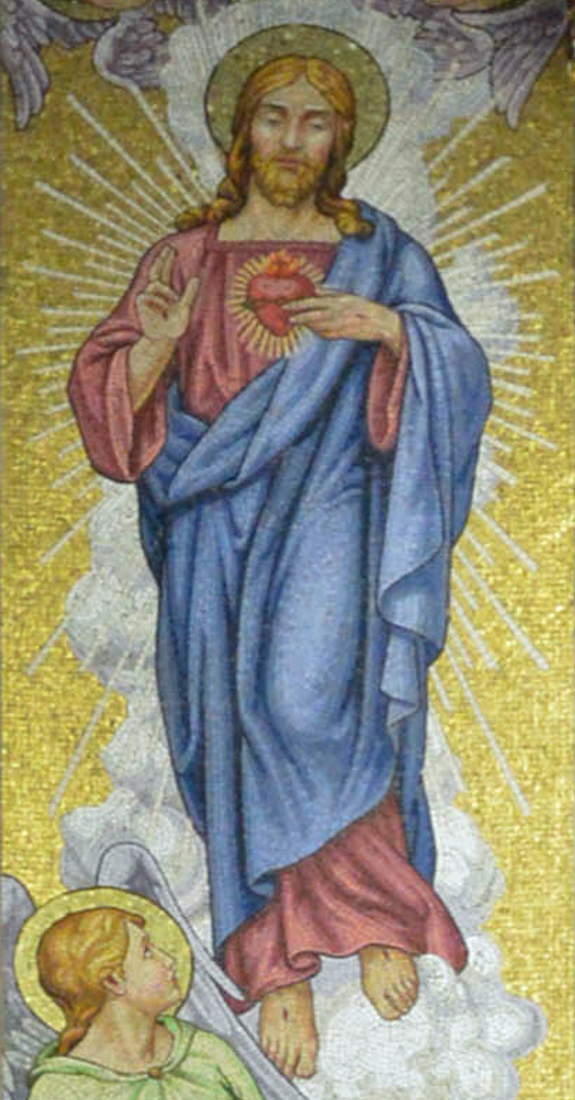
CONCLUSION
I hope you have enjoyed visiting Leeds Cathedral with me. It is a beautiful place.
I am happy to receive constructive comments or corrections concerning this website. The best websites are the ones which have no errors! I am grateful to my wife Margie who has proof-read these pages.
The Cathedral has an interesting website, and much of the textual information about the Cathedral on my site has come from there. I am happy to acknowledge this source. Wikipedia has been another useful source. The link for the Cathedral website is:
http://www.dioceseofleeds.org.uk/cathedral/
The photographs which appear on this site can also be found in higher resolution at:
https://www.flickr.com/photos/paulscottinfo/sets/
Paul Scott Site created 07/ 2018 ; reformatted 05 / 2020.

